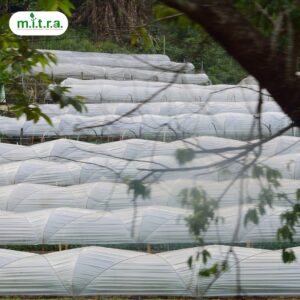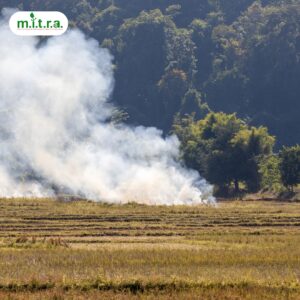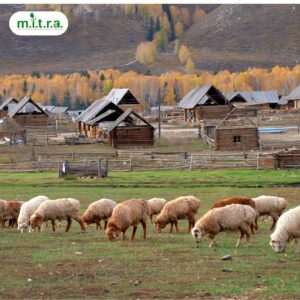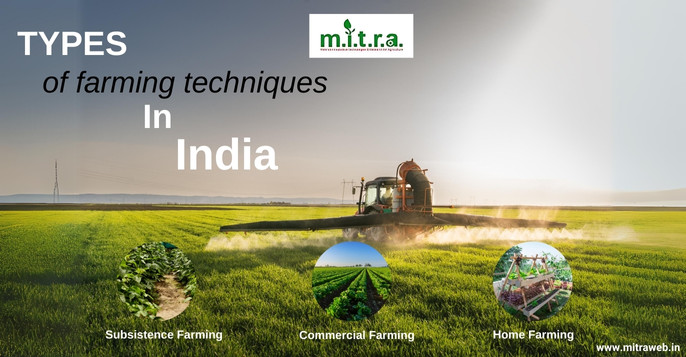Farming includes the production of food and ornamental plants. A tractor sprayer attached to a tractor’s back is called a tractor-mounted sprayer. Farming is the one economic foundation upon which every nation rests. The success or failure of a farm is affected by its location, the market for its products, the availability of skilled workers, and the sophistication of its machinery. If you’re looking to save time, energy, and resources, an orchard sprayer is the way to go.
There are three main types of farming:
The following are examples of the three main types of farming and agriculture:
Subsistence farming :

- Family farming is another name for subsistence farming since it provides for a farmer’s immediate family: only basic machinery and manual labour from around the house where needed. Low yields are typical of this type of farming. They do not use modern farming techniques or high-yielding varieties of seeds and fertilizer.
- They lack access to essential services like electricity and water irrigation. Farming for subsistence is typically done by hand.
Protect Your Crops with Ease
Talk Expert
Subsistence farming can be classified into two types:-
Intensive subsistence farming:

- It entails a relatively modest amount of land, some essential, low-cost tools, and additional labour for crop production. Because “intense” connotes strenuous effort, the implication is that more significant effort is needed. Multiple crops can be grown yearly on the same plot of land because of the favourable climate and rich soils typical of this type of farming.
- Rice is the primary crop here. Wheat, maize, pulses, and oilseeds are some additional crops. The more populated monsoon areas are where this type of farming is most prevalent. Southeast Asia and East Asia fall within this category.
- Primitive subsistence farming:-
- Nomadic farming and herding are also part of this lifestyle.
Need guidance?
We'd love to help you.

 Call Us
Call UsShifting cultivation:

- This farming grew in heavily wooded regions like the Amazon basin, tropical Africa, Southeast Asia, and northeast India. This is where the rain is heaviest. Rapid plant growth is regenerated.
- At the outset of the shifting cultivation process, the area is cleared by cutting down and burning trees. The resulting tree ash is then incorporated into the ground.
- Crops, including maize, yam, potatoes, and cassava, are cultivated using this method. This soil is suitable for growing crops every two or three years. Then the abandoned land as soil fertility declines. The farmers relocate to the new area and begin cultivating it similarly. Slash-and-burn farming describes this method of agriculture.
Boost Fertility & Yield
Free Demo
Nomadic Herding:

- The semiarid and arid regions are ideal for this method of farming. Like the central Asian republics, India’s Rajasthan and Jammu & Kashmir are home to beautiful landscapes. The farmers in this system herd their animals along predetermined paths as they go from one location to another in search of food and water.
- Sheep, camels, yaks, and goats are commonly raised for their meat and fibre in this region. Farming provides milk, meat, and other foods for the herdsmen and their families.
Commercial Farming
Crops are grown on this farm to be sold in local markets. This farming is done mainly for commercial reasons. It needed a lot of space and advanced machinery. High-priced equipment is used to complete the task. Commercial farming is 3 types.
Commercial grain farming:-
- Grains are the primary reason for this cultivation.
- Seasonally, this type of farming occurs during the winter.
- In this type of farming, only one crop can be cultivated at a time.
- Many wealthy farmers are living in this region.
Commercial mixed farming:-
- This type of farming is done for growing foods, fodders crops.
- In this farming, one or more crops are grown together.
- It has good rainfall and irrigation.
- The crops are cared for carefully.
- The crops are done almost at the same duration.
- This farming is most used in Europe, the eastern USA, Argentina, southeast Australia, New Zealand, and South Africa.
Home Farming:-
Growing food at home may be done on a terrace or in a garden. You only needed a little area and essential garden tools like a rake and pruners. You only needed a little room and some compact equipment like a garden rake and pruning shears. It’s not just food; this farming is utilized as a decorative item in people’s homes. It was done for both profit and survival purposes.
There are two types of farming:-
How many different kinds of farming do people in India practise? If this isn’t the case, then we’re likely to be categorised with the lower forms of farming in India. Check out this site for specifics on various farms. An agricultural sprayer machine is a vital tool for farmers.
Container farming:-
These farming methods are ideal for those with only a tiny plot of land to cultivate, such as in a city apartment’s balcony, courtyard, or yard. This farming method can grow almost any fruit, vegetable, or flower.
Vertical Farming:-
A “window garden” is how it’s being referred to here. Small plant crops and vine crops see the most vertical farming utilization. Ghee, Loki, tomato, chile, and coriander are all components. Since traditional methods of growing vine crops tend to provide lower yields, vertical farming is ideal for these plants. Air-assisted sprayer, and choose from a wide variety of sprayers available on the market.
In India, the anna data are the farmers. They put up long hours to ensure everyone has enough to eat. The farmers organized themselves by the size of their farms. Listed below are the many categories of Indian farmers. Consider looking at the Farmer profile. The Agriculture Blower is a vital component of feed mills and blenders.
- Marginal Farmers – When a farmer owns less than 1 hectare of land, they are considered Marginal farmers.
- Small Farmers – Small farmers tend to have 1–2 acres of land.
- Semi-medium farmers – Farmers with between 2 and 4 hectares of land are considered semi-medium.
- Medium Farmers– Farmers with 4–10 ha of land are considered medium farmers.
- Large Farmers – When a farmer owns 10 hectares of land or more, they are considered a Large farmer. These folks are also classified as farmers.
Conclusion –
In India, farming is the primary source of income, and there are many types of farming. This completes the exhaustive descriptions of the various farming methods. Please stay tuned for further developments along these lines, and I hope you enjoy this post. The latest in Agriculture news is also available here daily. As a necessary aspect of vineyard management, using a vineyard sprayer with pesticides to combat grapevine diseases and pests is essential.
Keep reading if you’re interested in learning more about crop farming!

